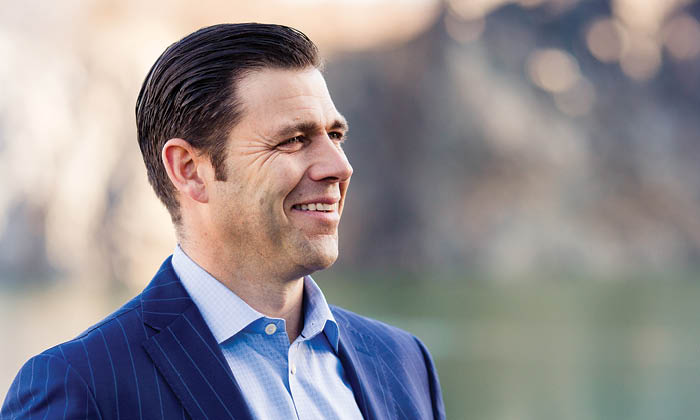
THE PROFile: Lance Colwell '92
As vice president for the U.S. Rare Diseases Group at biotechnology company Biogen, Lance Colwell ’92 connects people suffering from debilitating diseases with potentially life-saving treatments. His current focus is launching Spinraza,™ developed for spinal muscular atrophy (SMA) and one of the fastest drugs ever to be approved by the Food and Drug Administration. Here, he shares insights on the process.
You have to play the long game. At a typical high-tech company, it’s about what new app or device can I launch every six months. Developing a new drug takes an average of seven to 10 years from beginning to end. It is also really expensive — usually over a billion dollars — and the majority of what we do is unsuccessful. To go from a research concept through clinical trials and receiving approval is highly unlikely.
Rare diseases present special challenges. When you have a relatively small population, it can be difficult to identify patients and the physicians who treat them. Spinal muscular atrophy is one of the worst diseases you can imagine and a leading genetic cause of death in infants and toddlers. In most cases, babies with the most serious form of the disease lose their ability to sit up and roll over, and typically die before age 2. Others may live longer, but will be significantly impacted by loss of muscle strength.
The science needs to get personal. Years before a drug is going to launch, I am meeting with doctors and patients to understand their needs. We may have an endpoint in a clinical trial that talks about a very technical motor improvement, but what does that really mean to the patient? I recently saw one child who can’t chew anymore; helping with that would be fantastic for the family. For other patients, it could be the ability to lift her hand to her mouth or the ability to hold his head up. We have to translate the science into terms that show a drug’s meaningful impact on the patient’s life.
Education doesn’t stop at the patient. Even though my job typically starts with understanding the patient’s needs, it ends up being about educating physicians about a new drug. Doctors have hundreds and hundreds of diseases they need to keep up with. My role is helping them understand the therapy and how it’s going to benefit their patients. In the case of SMA, specialists have never had an approved drug that actually worked for these kids and they need to understand the benefits and risks of using the therapy.
There will be a long line. There are very few experts in the country who know this disease, but we estimate there are 7,000 to 10,000 patients. So there’s a capacity problem. At this point, you have patients anxiously awaiting this therapy, so there could be significant delays in some getting access to it. We’ve talked with doctors about what they might to do increase capacity at their own centers, and about whether there are doctors who may not be experts in SMA, but who can help administer the drug closer to where patients live.
It’s not just about distributing the drugs to the clinics. This treatment requires an injection directly into the spine, and you initially need four doses over the first two months. Some of these kids have rods in their back or are in a wheelchair and can’t breathe well. That makes it difficult to administer the drug and challenging for families to travel back and forth to their specialist physician. We’ve developed a pretty unique model called Family Access Managers, who understand and help support patients’ needs.
Collaboration rules. There are probably 30-plus departments involved in bringing a drug to market, between manufacturing, regulatory, legal, patient services, medical, marketing, IT and so forth. It takes 20 different vendors alone to get the drug into a box with the proper bottle, label and packaging. I feel very fortunate about the classes I took at Bentley in marketing, finance, law, management. I use different elements of my education every day.
This work is inspiring. In December, I met a 7-year-old girl from New Hampshire who was in one of our clinical trials. She would most likely be dead if she hadn’t gotten our therapy. Listening to her mom and dad, who feel so fortunate and blessed to have their daughter with them now, gave me chills. I can’t fully appreciate everything they are going through. But as a parent myself, I can understand how awful this disease can be … how every week and every day matters to these families. Just thinking I can have a meaningful impact on their lives is amazing.

